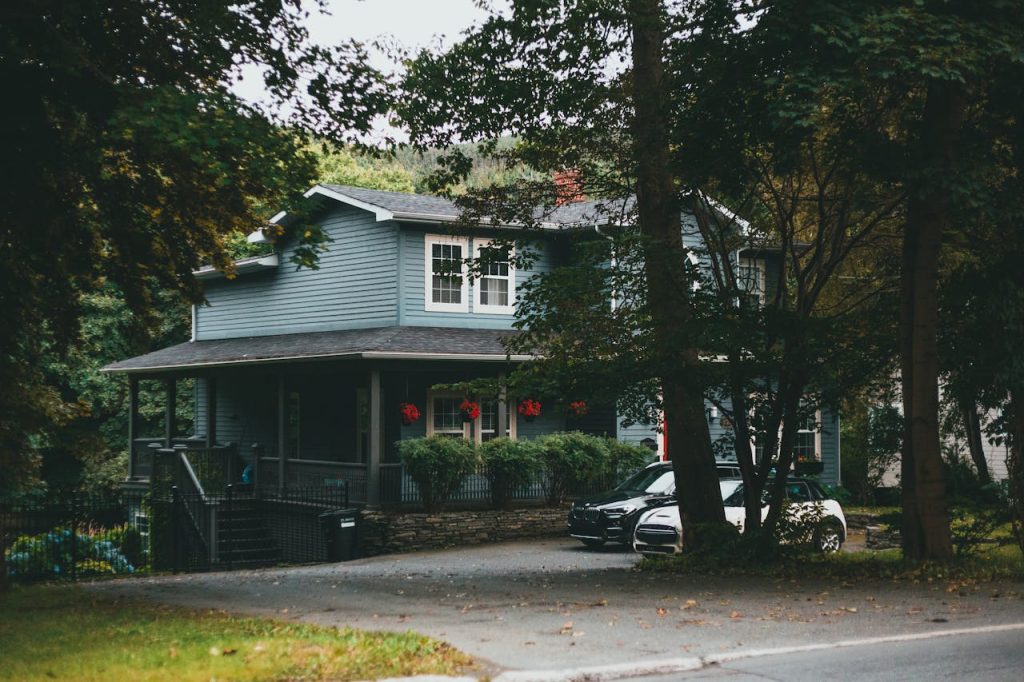At first glance, a house is just a structure—a combination of walls, windows, and a roof that provides physical shelter. But for organizations like Koda House Inc., and for the individuals we serve, the concept of home represents far more. It’s about safety, belonging, dignity, and the opportunity to rebuild. Whether someone is coming out of homelessness, escaping trauma, or transitioning from addiction recovery, having access to a stable and supportive environment can change everything.
The image above, a peaceful home nestled in nature, serves as a powerful visual metaphor for what we strive to create: not just a place to stay, but a place to begin again. Let’s explore why having a “home” matters, and how the values we build into our physical spaces can support profound emotional and psychological healing.
Home as Sanctuary: The First Step in Recovery
For someone navigating crisis or trauma, the first priority is safety. Not just the absence of danger, but the presence of peace. At Koda House, we create a sanctuary where residents feel secure, supported, and respected. This physical and emotional safety lays the groundwork for everything that follows.
When someone feels safe, their nervous system can begin to downshift from fight-or-flight into regulation. From this place of calm, the real work of healing can begin—whether it’s learning to trust others again, exploring emotional wounds, or simply reestablishing a daily rhythm. A home provides that safe base from which growth becomes possible.
Space as a Mirror: How Environment Shapes Identity
Have you ever noticed how the spaces you inhabit affect how you feel? Cluttered or chaotic environments can increase anxiety, while open, clean, and well-maintained spaces promote clarity and calm. At Koda House, we design our environment intentionally—through nature, warmth, and simplicity—so that every resident begins to see themselves as deserving of care and beauty.
We believe that when someone lives in a place that reflects dignity, they are more likely to internalize that sense of worth. That’s why we keep our spaces welcoming, our gardens tended, and our rooms filled with natural light and creative touches. The environment doesn’t just support healing—it accelerates it.
Home as Classroom: Relearning Life Skills
A trauma-informed home like Koda House is also a place for relearning. Many of our residents come to us after years of instability—where basic life skills like cooking, budgeting, or managing time were never modeled or supported.
Through our structured daily living program, we teach these skills not as chores, but as empowering tools for independence. Residents learn to grow their own food, prepare nutritious meals, clean and organize their space, and develop routines. These acts become not just functional—but deeply symbolic: proof that they are capable, valuable, and in control of their future.
Community Within the Home: Connection Heals
True healing happens in relationship. While therapy and introspection are essential, the everyday interactions within a shared home can be just as powerful. At Koda House, our low-residency model allows for meaningful peer-to-peer connections, communal meals, and shared responsibilities. These moments offer residents a chance to practice trust, accountability, and kindness in real time.
We also bring in local volunteers, mentors, and mental health professionals, reinforcing the idea that home extends beyond four walls—it includes the people who walk with us through our transformation.
Beyond the Building: Reimagining What Home Can Be
The most important takeaway? “Home” doesn’t require luxury, or perfection, or even ownership. What it requires is intention. A home becomes healing when it is designed with care, when it holds space for every kind of story, and when it teaches people that they are not alone.
For those of us fortunate enough to have stable homes, we can begin to think of them not only as personal spaces—but also as platforms for service. Could we open our doors to those in need? Could we create safer emotional homes through listening, boundaries, and empathy? Could our communities become more home-like—more inclusive, nurturing, and patient?
How You Can Help Create Home for Others
If this vision resonates with you, there are several ways to be part of it:
- Support grassroots nonprofits like Koda House that offer trauma-informed housing
- Donate household goods or meals to shelters and transitional programs
- Mentor or volunteer your time and skills—especially in rural or underserved areas
- Advocate for affordable housing and mental health support in your local community
- Foster a culture of care in your own relationships—be someone’s safe space
Final Reflection
At Koda House, we believe that healing happens when people feel safe, seen, and supported. And while a house may provide a roof, a home provides hope.
Let us continue building homes—not just with bricks and beams, but with intention, compassion, and community. Because everyone deserves more than shelter. They deserve a space where they can be themselves, heal with dignity, and move toward a future that feels not only possible, but promised.



